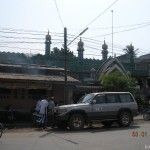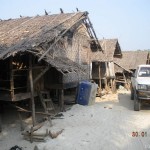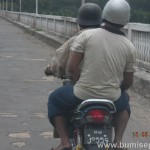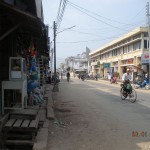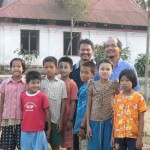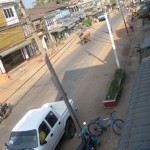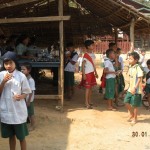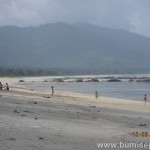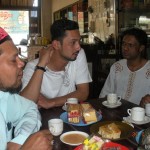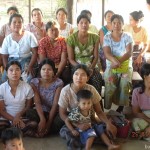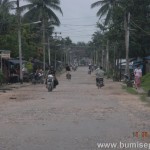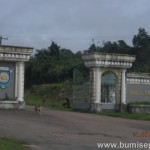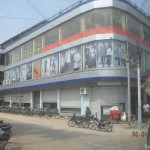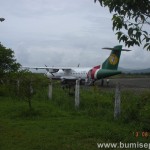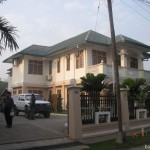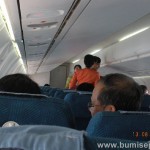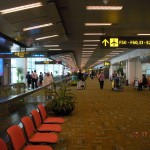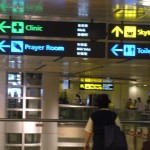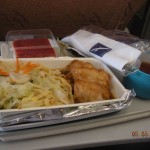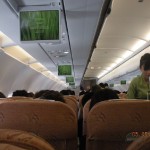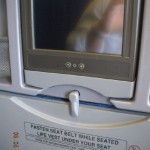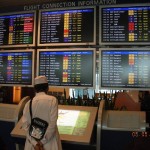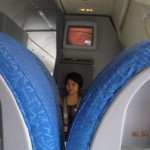This trip was first performed in January 2009. Info are correct at that time. Dawei is accessible via Yangon Air flight from Yangon Airport (domestic terminal). The flight time was about an hour on ATR aircraft. Tourists need a special permit to visit this city, due to security reasons. The city is home to a naval base, and with close proximity to Thai border, the potential threat from insurgents cannot be downplayed. Abu Adam revisited this city for the second time in August 2009. Read his story about the city below.
Work took me to this remote town of the Myanmar’s southern division of Tanintharyi. FYI, Myanmar comprises of seven states and seven divisions. Dawei is a capital city of this division, with population of about 150,000. Dawei is previously known as Tavoy, during British era. Yangon Airways flies daily to Dawei on ATR72 aircraft from Yangon. Flight time is about an hour.
Dawei is a no-go area for tourist. It means foreigners require special permit to enter the town. Have I told you earlier that some places in Myanmar are restricted to tourists? Yes, tourists need special travel permits to get into some ‘special’ places in Myanmar. It is more for security reasons, due to the fact that the country is ruled by the military. And normally military people are more secretive.
Same as Dawei – you need a special permit to enter the city. But I am here for a business trip, together with a partner from the Myanmar Government. So he managed all the paperwork to get me into the town legally. We are visiting remote villages in Dawei, more specifically near dusty town Laung Lon leading to a fishing village at the southern tip of a small peninsular facing the Andaman Sea. In fact our Company has sponsored financially some community programs at these remote villages, as part of our corporate social responsibility to the local people in Myanmar. It has always been the philosophy of our parent company to develop local resources in the country we operate. I am proud of this tradition. Leaving a good legacy is not an option, it is a smart living. Life is so short that you have to make the most out of it. My wife’s cousin — a successful corporate man — died from cancer last month leaving a wife and 4 children me and my wife knew. I regretted a bit because I did not take a time out of my busy schedule despite early notice of his deteriorating condition to visit him during his final days. This is one of my many regrets even though I have been proclaiming to the world that I live a life with no regret.
Lets go back to Dawei.
The town is made up old wooden and mortar buildings along dusty streets. These parallel streets meet other perpendicular ones forming a grid which makes up a downtown area of Dawei. There is one big shopping center. City Hall building is a very old building built by British. There are a number of 2 -3 star hotels and guest houses in the city center, with rate about US40 – 60 per night.
Crossing the bridge over Dawei River, the road will branch to Y shape. To the north, you will see Dawei University to you left and further up will take you to the other remote villages linked via dirt roads. To the south, you will come to a village called Long Lone and further down other remote villages and eventually to the small fishing village at southern tip of small peninsular. The jouney from Dawei to this fishing village takes about 2 hours by Toyota Land Cruiser. 4WD vehicles are the only way to travel through this dusty mountain roads.
You can see horse carts are used as a public transports.
There is a mosque in the downtown area. I was informed there were three more around Dawei. Moslems are mainly traders and businessmen here. I managed to catch a Friday prayers in the downtown mosque. The khutbah (sermon) was delivered in local dialect with quotes from Koran reminding us to do taqwa (good deeds) and prepare ourselves for the Life Hereafter. The imam said the best of preparation is taqwa. Next to the masjid is a Moslem-owned coffee-shop. We hung around there after Friday prayers and joined locals for a cup of laphayet (“tea_ tarik” = tea with milk).
There is a sea-side village called Maungmagan which is about 45 minutes drive from the city. I traveled to this beach in August 2009. With miles of clean, white sand and coconut trees, Maungmagan beach is very scenic. It has everything tourists are looking for in tropical holidays package, minus the hotels and transport. There were few guest houses though, but old and abandoned. The road from Dawei was really bad, not to mention the public transport. There is trade-off in evertyhing we do. The good thing is no rubbish, no plastic bags. Why? Because no tourists. No tourists means no business.
- A mosque in Dawei downtown
- A fisherman village some 2 hour drive from Dawei, Myanmar
- Motorcycle comes handy for Daweians
- A scenic lagoon some 2 hour drive from Dawei
- Air Yangon in-flight service. Not bad eh!
- A Dawei city street
- Teenagers dating on motorcycle on Dawei bridge
- Village kids near Dawei, Myanmar
- A street in downtown Dawei
- School kids just after school hours, near Dawei, Myanmar
- Maungmagan beach is 40 minute drive from Dawei
- Local moslems at a tea-shop in Dawei, Myanmar
- Shophouses in Dawei, Myanmar
- Village folks near Dawei, Myanmar
- Dawei city streets
- Entrance to Dawei University
- The only shopping center in Dawei, Myanmar
- A guest house or hotel in Dawei
- Narrow mountain road leading to sea-side Maungmagan town
- Inside Yangon Air aircraft enroute Yangon

